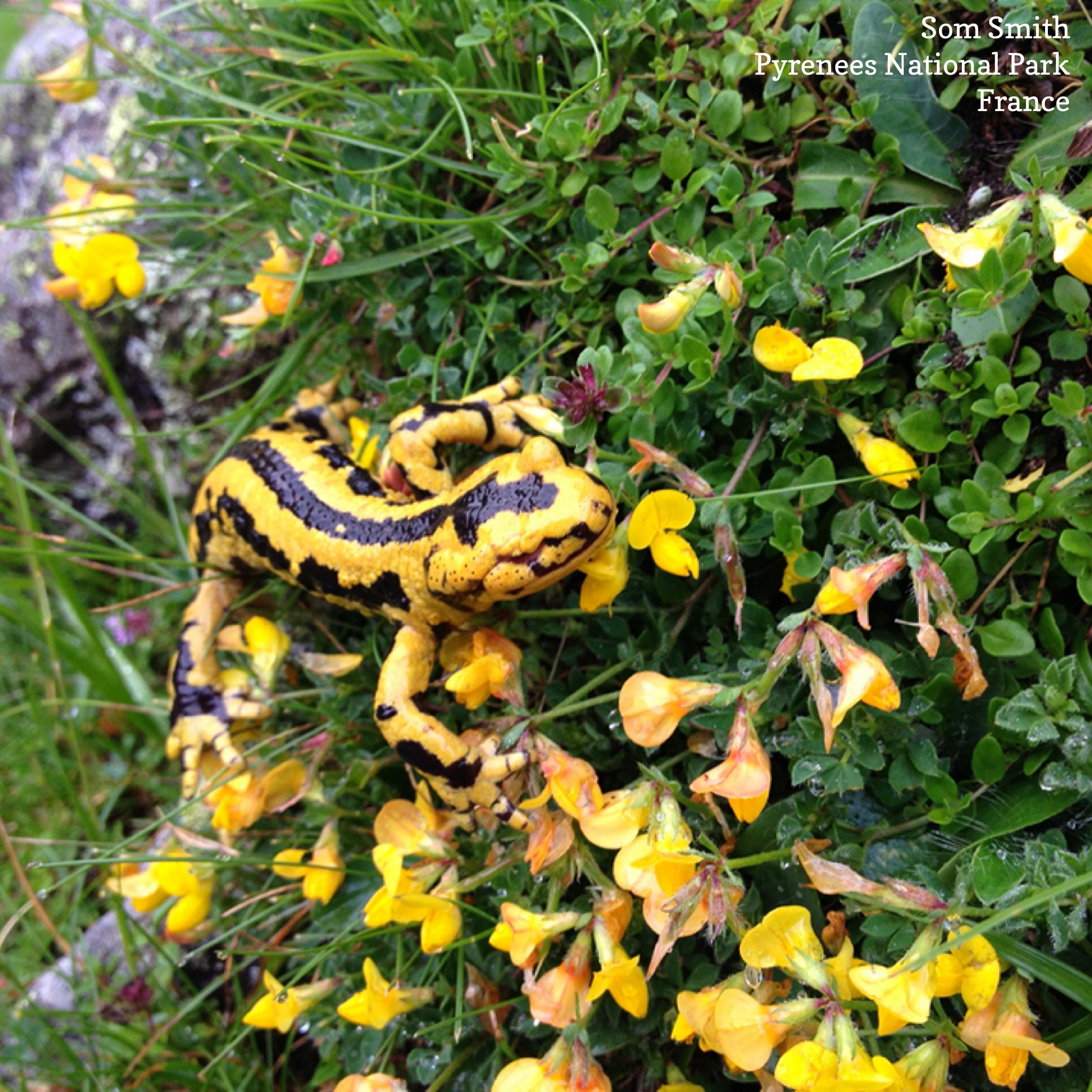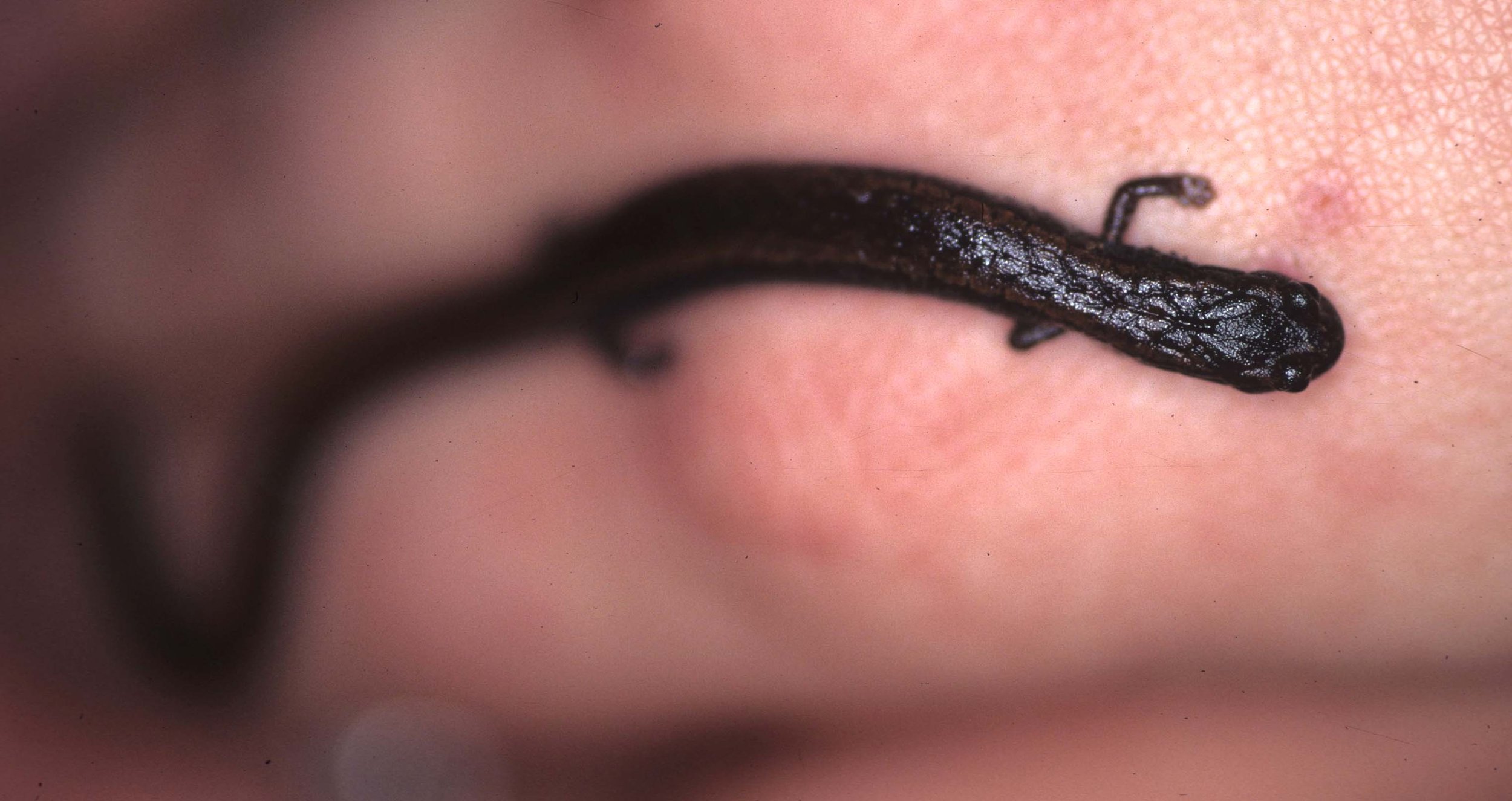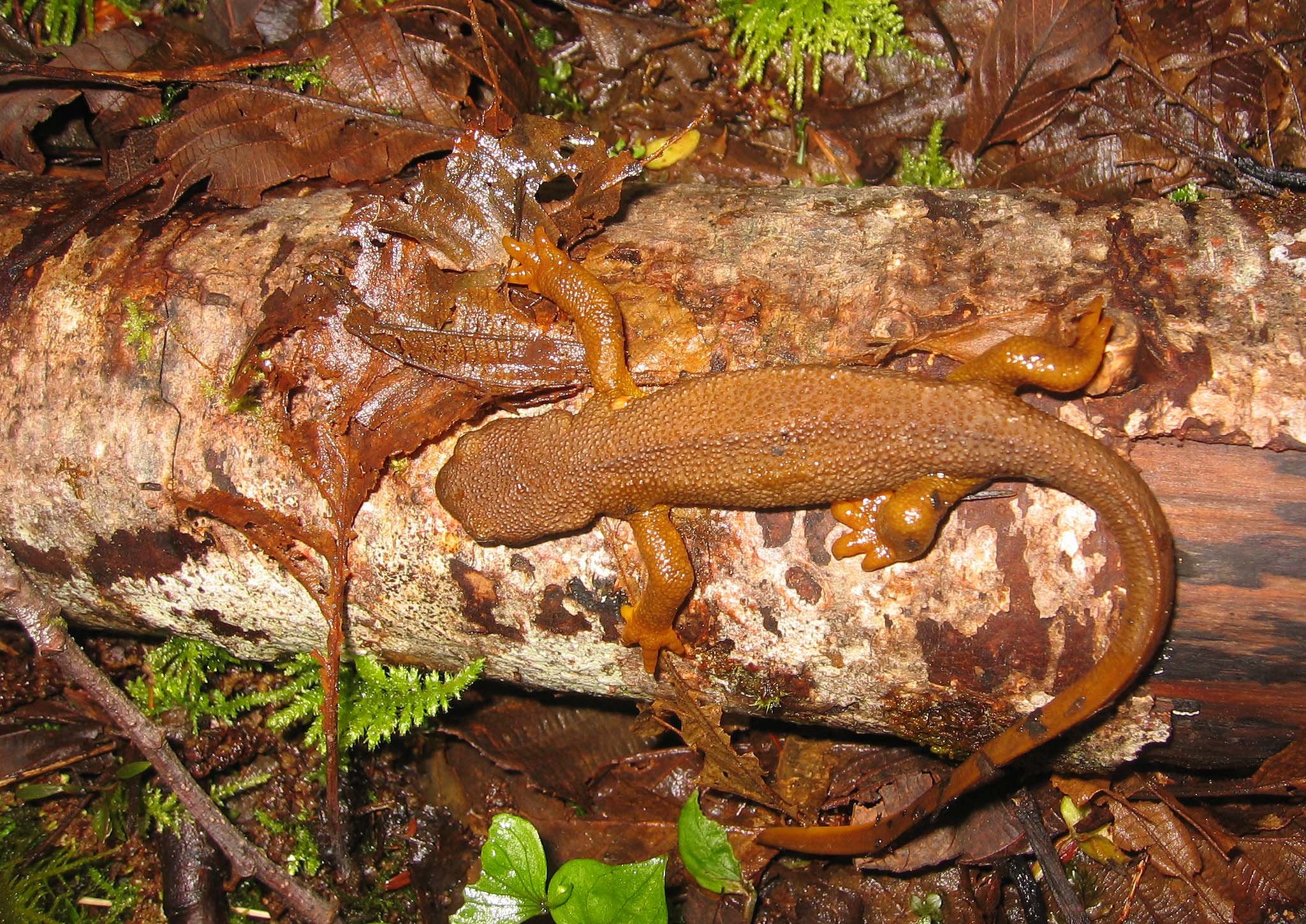Salamaders, Newts & Caecilians (below)
Salamandridae is second in diversity to the lungless salamanders (family Plethodontidae); the family is made up of 15 genera of true salamanders and over 50 species of newts. Salamandridae has a spotty geographic distribution throughout the Northern Hemisphere and occurs from western Europe to the Urals, from southern China to Japan, on the west coast of North America, and east of the Rocky Mountains in the eastern United States. Salamandrids range from moderately slender to robust-bodied forms. All have well-developed limbs and tails. They are usually less than 20 cm (8 inches) in total length, and many are less than 10 cm (4 inches). Newts have rough skin, and the skin of many salamanders is rugose (wrinkled).
Fire Salamander (Salamandra salamandra) Western France
Arboreal Salamander (Aneides lugubris) Point Reyes, California
Salamander species needs ID - Point Reyes, California
Slender Salamander (Batrachoseps species) Point Reyes, California
Slender Salamander - Point Reyes, California
Rough-skinned Newt (Taricha granulosa) Washington State USA
Caecilians
Caecilians are a group of limbless, vermiform (worm-shaped) or serpentine (snake-shaped) amphibians with small or sometimes nonexistent eyes. They mostly live hidden in soil or in streambeds, and this cryptic lifestyle renders caecilians among the least familiar amphibians. Modern caecilians live in the tropics of South and Central America, Africa, and southern Asia. Caecilians feed on small subterranean creatures such as earthworms. The body is cylindrical and often darkly coloured, and the skull is bullet-shaped and strongly built. Caecilian heads have several unique adaptations, including fused cranial and jaw bones, a two-part system of jaw muscles, and a chemosensory tentacle in front of the eye. The skin is slimy and bears ringlike markings or grooves and may contain scales.
Yellow-striped Caecilian (Ichthyophis bannanicus) Udawalawa NP, Sri Lanka























































